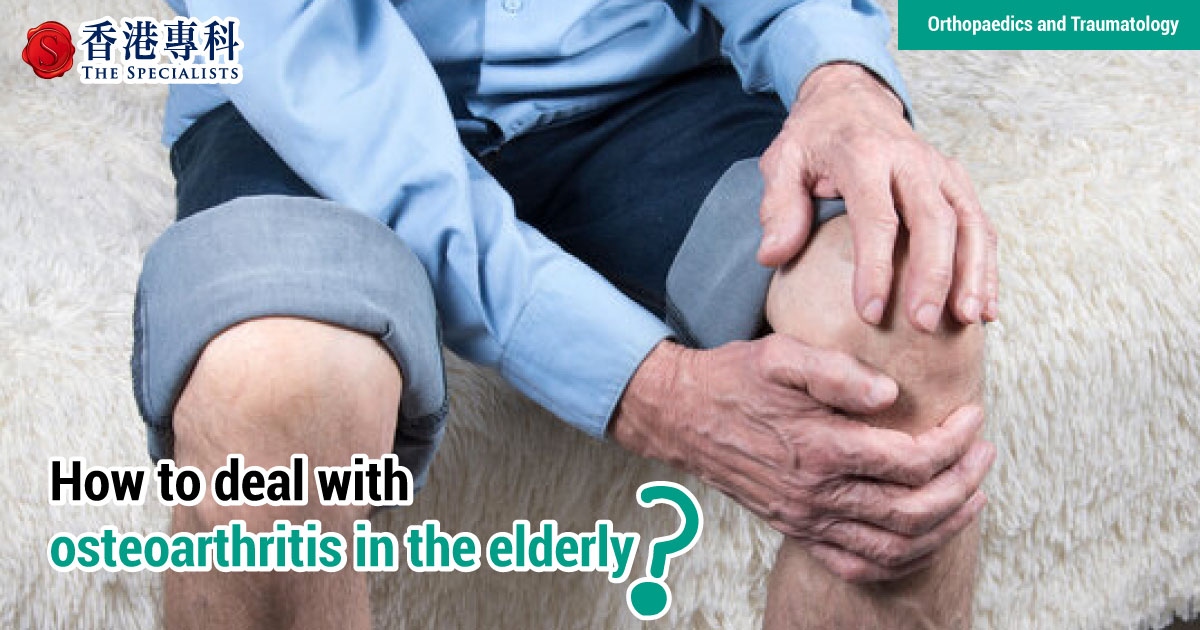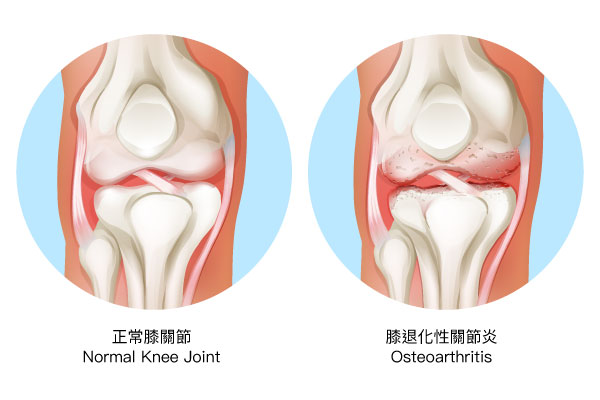How to deal with osteoarthritis in the elderly?

Many of us enjoy playing sports, including ball games, hiking, etc. Exercising regularly has many benefits for your body. We should, at the same time, pay attention to the knee health, especially for the elderly. Elderly people often suffer from the knee pain when walking, a feeling of tightness or stiffness in the knee when flexion and extension, local redness and swelling. And in severe cases, they may have trouble performing a deep and full squat. Patients need to have consultations with doctors since it might be a sign of degenerative joint disease, also called osteoarthritis.

What causes osteoarthritis?
Osteoarthritis is a common type of arthritis. When articular cartilage deteriorates, osteoarthritis and resultant pain can ensue. The layer of smooth white connective tissue can be damaged with fissures on the surface due to the normal aging. When areas of cartilage are worn away, the underlying (subchondral) bone is therefore exposed, causing a bone to rub against bone. The bone cavity becomes much narrower which leads to the development of bone spurs.
Is osteoarthritis hereditary?
Osteoarthritis has been found to run in some families. Though it does have family traits, it does not mean that family member will inevitably develop the disease. In some cases, the X-ray pictures suggest the underlying conditions of a 40-year-old man’s joint is worse than that present in the cartilage of an 80 year-old. The increase in the prevalence of osteoarthritis can be attributable to the rise in obesity. Being overweight means to put an extra pressure on the knees, resulting in a rapid cartilage loss.
What is the effective joint supplement?
Some advertisers of supplements tell the efficacy in treating the osteoarthritis, but only few of them are scientifically proven to deliver results. Laboratory tests have shown that glucosamine sulphate may help protect joint cartilage by stimulating cartilage cells to produce proteoglycans, helping the cartilage metabolism and promoting osteoblastic cells via anti-inflammatory effect.
Is there an injection for osteoarthritis?
Patients who experience acute osteoarthritis can get a steroid injection to temporarily lubricate and change the abnormal synovial environment of the knee joint, thereby decreasing knee pain and inflammation. Steroid injections, however, provides only short-term relief.

Patients may also consider hyaluronic acid injections for the knee osteoarthritis. It can improve joint movement by increasing joint lubrication and reducing joint friction and inflammation. The time interval between injections is around 3 to 6 months. The purpose is to increase cartilage volume and reduce the knee pain.
Surgical treatments for osteoarthritis
People with osteoarthritis can experience a general deterioration in quality of life. The total joint replacement (an arthroplasty) may help. It is a procedure which involves removing part or all of the damaged joint and replacing it with artificial implants which are made with metals and plastic materials. As the artificial implants have its life expectancy, patients should take precautions to protect their new knees.
Prevention
Running shoes and athletic shoes in general may help osteoarthritis. And patients should be cautious during the exercises. Walking and tai chi are good aerobic exercises for people with osteoarthritis and can strengthen the muscles. Meanwhile, patients might avoid squatting, kneeling, sitting on a low chair, climbing stairs or ladders, heavy lifting, etc, that might easily stress the knees.
*The above information is for reference only, please consult your doctor for detail.

 3405 8288
3405 8288
